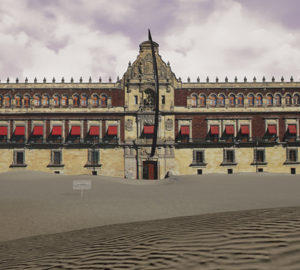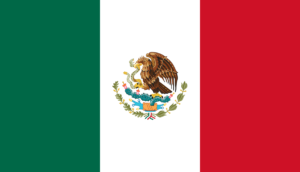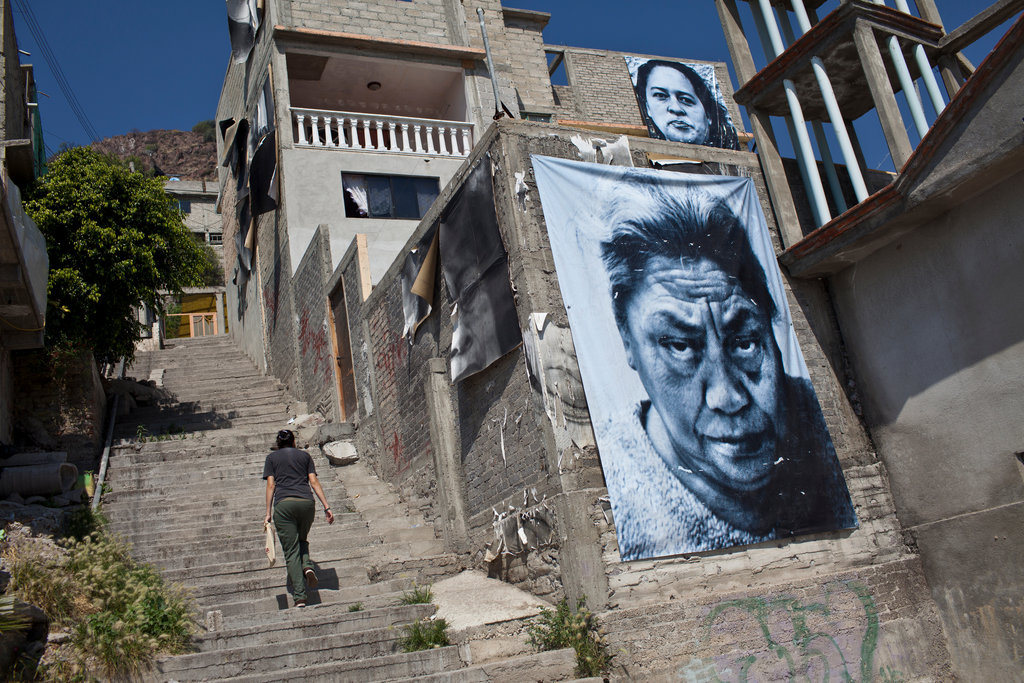
In Juan Caloca’s virtual game, High Treason, the Mexican artist uses his artistic capabilities to further his criticisms of the Mexican government. In his ‘game’, there is no way to win. To preface this program made by Caloca, you have to understand a little bit of Mexico’s history of censorship. In 1984, President Miguel de la Madrid of Mexico made the misuse or modification of national symbols illegal. Many citizens were furious about this stifling of this free speech, yet it is still in law today.

While playing the game, I was slightly confused on Caloca’s objective at first. You begin by walking into a castle that resembles the National Palace (the equivalent to the White House) where the President and other important members live. As you walk in, you are shocked to see multiple portraits of prominent Mexican politicians who have been transformed into alien-like faces, all making weird noises as you pass by. Also, the scene changes from a palace into a museum-like space. There are many different types of government-shaming art figures around the museum, but the most shocking would have to be the absolute disrespectful photographs he has of people modifying or misusing the law, which is against Mexico’s law that was passed in 1984. Don’t get me wrong- I do not disagree with Caloca’s criticisms of the government, but there is no other word other than “disrespectful” to describe a photo hanging in a museum showing a citizen defecating on the Mexican flag.
Some of the art in the museum is beautiful, yet just by existing the video game is breaking many laws and placing their artists in harms way. These rebellious artists are hurting the popularity and image of the Mexican politicians (the crime) with images that distort yet shine a light on their crimes against their citizens (the art). Artists such as Caloca see their freedom as less important than allowing their message to get to Mexico’s citizens, probably because they do not consider the false nationality that is taking place in Mexico to be real freedom. Not being allowed to criticize the symbol of the government goes hand-in-hand with not being allowed to criticize the government or their actions that are hurting the people. The corruption within the government has been something that needs to be addressed and changed, yet the public cannot push for this change without being threatened with their ‘freedom’.

Some of the art in the game is a re-drawing of the flag which is definitely considered illegal, making it all the more alluring to the citizens who are frustrated with their leadership. The original flag is green, white and red with an eagle standing on top of a cactus while eating a snake. However, in the new versions, the snake is eating the eagle instead. The image on the flag represents the ancient Aztecs finding their homeland, but with the snake now eating the eagle, it is now a message to the government: Mexico will not be considered their home if they do not have the freedom to challenge their government. This powerful message is shown through art- not a physical protest that most people would imagine when picturing pushback from the public.
Overall, Juan Caloca’s video game that begins at the National Palace is both incredibly illegal and incredibly necessary for the improvement of Mexican citizens lives. There are many problems within the government that are never addressed because of the law from 1984. The only way to move on is to move forward and use the criticism in a way that allows for positive change.







